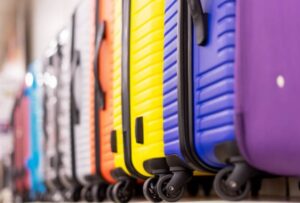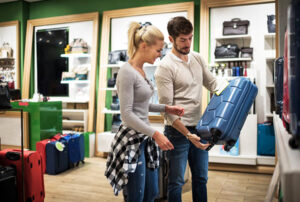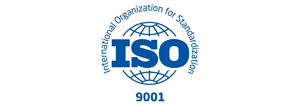In the context of the pursuit of individuality, consumers are no longer satisfied with highly homogenized products. As a common travel equipment for every household, the suitcase market is also facing the challenge of innovation and upgrading. Whether it is a product line that dealers seek to differentiate competition or an individual consumer pursuing an exclusive design that highlights personality, customized suitcases have become a popular choice. It is worth noting that although many luggage manufacturers are providing customized services on the market, selecting suppliers with professional strength and creating high-quality customized products still requires comprehensive consideration from multiple dimensions such as technical strength, supply chain management, and service processes. Next, we will detail the key points of customized suitcases for you.
1. Clear Requirements
The first step in customizing a suitcase is to clarify the design style. The current mainstream products in the market include four-wheel universal wheel suitcases, classic two-wheel trolley suitcases, scooter suitcases, rideable suitcases, foldable suitcases, etc. In addition to existing categories, composite products can also be developed in combination with functional innovation needs. Different manufacturers have their own expertise in the field of technology, so before customizing a suitcase, you must first clarify what your needs are: in addition to the basic styles, you also need to have a clear idea of key indicators such as size parameters, material craftsmanship, and accessory combinations. For dealers, it is recommended to conduct market research in advance, analyze consumer trends and target customer portraits, and accurately position the functional positioning and design direction of the product.
2. Find Suppliers
After determining the customization needs, you can start looking for professional luggage suppliers that provide customized services. In today’s highly developed digital procurement channels, it is not difficult to find a supplier. It is recommended to enter precise keywords such as “luggage customization manufacturer” through vertical e-commerce platforms, B2B industry websites or search engines to quickly obtain a list of candidate companies. By browsing the merchant’s web page information including the products and services it displays, the company’s introduction, and certificate qualifications, you can filter out potential partners that meet your requirements.
In addition to online channels, you can also find suitable suppliers by participating in some luggage exhibitions. Offline platforms such as international luggage exhibitions and industry order fairs can provide opportunities for face-to-face communication with manufacturers. At the same time, you can compare the products and advantages of multiple suppliers, such as product technology, material texture, production cycle, minimum order quantity and other factors, and preliminarily screen out suppliers that meet the requirements.
3. Identify Partners
After completing the preliminary screening, the candidate suppliers need to be verified and comprehensively evaluated. First, the compliance documents of the company should be checked, including basic qualifications such as business licenses and production licenses. At the same time, industry access certificates such as ISO quality management system certification and environmental protection certification are required to ensure that its production management meets international standards.
After reaching a preliminary cooperation intention, it is recommended to give priority to on-site factory inspections. By examining the factory scale, equipment configuration, and number of employees, its production efficiency is comprehensively evaluated; at the same time, the production process and raw material quality are observed on site, and the quality control standards of key process links (such as box molding, hardware assembly, etc.) are focused on. In addition, the company can be required to provide a third-party quality inspection report to verify the core performance indicators of the product such as impact resistance and wear resistance.
If the on-site inspection cannot be carried out due to objective conditions, it is recommended to replace it with a sample inspection process. Suppliers are required to send complete samples, focusing on the inspection of the box structure strength, the smoothness of the pull rod, the flexibility of the wheelset, and other user experience indicators, while verifying the environmental protection of the lining material, the safety of the lock and other detailed processes. Through sample comparison and analysis, select partners with process accuracy and quality control systems that meet the standards.
4. Design Plan
After confirming the supplier, you can propose your design ideas to him. In order to let the supplier understand your needs more clearly, it is recommended to submit detailed product specifications in written form, covering the material of the box, appearance, pattern design, color matching scheme brand LOGO, etc. If you have any drawings, photos, or process reference samples, you should provide them together to ensure the accuracy of information transmission. Of course, if you don’t have a design plan yet, but just have a preliminary idea, you can also design it with the supplier’s design team. The designer will provide creative proposals based on your preliminary ideas (such as functional requirements, and style positioning), combined with market trends and process feasibility. During this period, if there are any problems, you can propose modifications at any time. Finally, a standardized plan document containing design drawings, material lists, and process instructions is formed, and after both parties sign and confirm, it will enter the mass production preparation stage.
5. Signing a Contract
Before entering the mass production stage, the manufacturer will conduct a final technical confirmation with the customer, including material specifications, size, order quantity, delivery cycle, etc. After all the details are confirmed, the two parties will conduct price negotiations and sign a formal purchase contract. The contract text must stipulate product standards, settlement methods, liability for breach of contract, ownership of intellectual property rights and after-sales service terms, and protect the legitimate rights and interests of both parties through standardized legal documents.
6. Production Tracking
Since the production time of customized luggage is relatively long, during the product manufacturing period, you can ask the supplier to provide regular reports on the production progress to predict the risk of delay in advance. When the luggage is delivered, the standardized acceptance process should be implemented for the product. Once quality problems are found, communicate with the supplier promptly to carry out rework repairs, replenishment, and reissue of accessories. If the product needs to be delivered over a long distance, the transportation cost and timeliness should also be considered to choosing the most cost-effective transportation method. In addition, it is recommended to purchase transportation insurance, clarify the division of liability for cargo damage, and ensure the safety of the product in transit.
In the process of customizing luggage, every link cannot be ignored. Whether it is corporate procurement or personal customization, choosing a supplier with professional strength is the key to the success of the project. As a world-leading luggage manufacturer, Zhongdi Factory pays great attention to product research and development, has rich OEM experience, and provides customers with a one-stop solution from design proofing to mass production delivery. Welcome your consultation at any time to jointly create customized luggage products with both functional and aesthetic value.

















